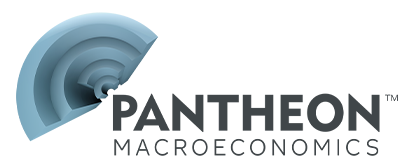Eurozone Publications
Below is a list of our Eurozone Publications for the last 5 months. If you are looking for reports older than 5 months please email info@pantheonmacro.com, or contact your account rep
Please use the filters on the right to search for a specific date or topic.
Datanotes Daily Monitor Claus Vistesen (Chief Eurozone Economist)
- The IFO fell in September, offsetting temporary optimism after the jump in the PMI earlier.
- German surveys remain consistent with decent near-term growth in manufacturing and services.
- We still see weak growth in H2 2025, but the upturn in real M1 growth promises a much better 2026.
In one line: That’s more like it, but upturn in manufacturing is on borrowed time.
In one line: Political brinkmanship comes at a cost.
- The EZ composite PMI rose further in September, but the details were weaker than the headline.
- The outlook for services is improving, but new orders in manufacturing warn of a Q4 slowdown in output.
- ECB doves will need a clearer sign of weakness in the PMIs to push their case for a Q4 insurance cut.
- EURUSD has remained stronger than we anticipated; we are raising our forecasts.
- We still look for near-term weakness in EURUSD, but we’re lifting our forecast for end-2026, to 1.17.
- If EURUSD rises to 1.20-to-1.25 in Q4 this year, ECB rate cuts would come swiftly back on to the agenda.
In one line: Positive pick-up in services, but downside risks loom in industrial output.
In one line: A decent start to Q3, but the carry-over is still negative.
In one line: All set for a rebound into year-end.
- We think a rebound in inflation will now close the window on further monetary policy easing.
- Risks are asymmetric, however; the ECB will either cut or hold in the next three-to-six months.
- A near-term downside surprise in core inflation and further euro strength will prompt doves to pounce.
In one line: Lifted by rebound in equities.
- Our fair-value model for bunds points to little near-term upside to yields, due to falling US rates.
- We estimate that fiscal stimulus in Germany will add around 30bp to bund yields between now and 2027.
- Overall, we see a slow rise in bund yields to 3% by 2027, implying limited near-term upside.
In one line: A cyclical low; a gentle rebound now lies ahead.
In one line: A further near-term rise is coming before a plunge in early 2026.
In one line: The ECB is happy at 2%, for now.
In one line: ECB doves need better persuasion skills.
- The ECB stands pat, despite lowering its headline and core inflation forecast for 2027; why?
- A more balanced growth outlook and a relatively high neutral rate mean the ECB is happy, for now.
- Has the bar for easing been lifted or is the risk of a Q4 cut now higher? It could be both, actually.
In one line: Manufacturing on track to boost growth in Q3.
- A cyclical rise in tax revenues provides an incentive for political brinkmanship to continue in France.
- Industrial output signals upside risk to investment but how will consumers respond to falling incomes?
- Growth in France will drop to the bottom of the pile of the major four economies next year.
- The ECB will hold fire this week, as data has swung to the side of the hawks over the past few months.
- The confidence interval around a baseline of a stable deposit rate at 2% next year is widening.
- Rates will be stable or fall in the next six months; then the balance will shift towards no change or hikes.
In one line: Solid production numbers, but net trade in goods remain under pressure.
